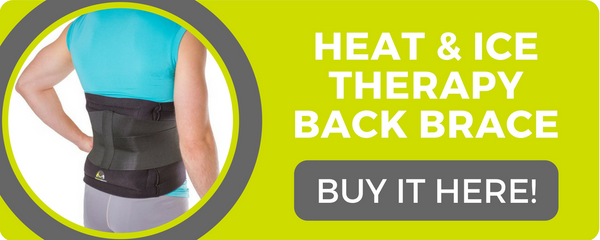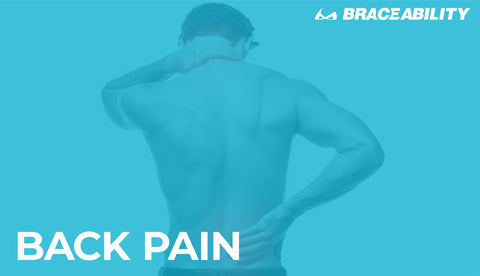Tailbone Injury & Coccyx Pain
Where is my Tailbone? Is it part of my Spine?
We often think of the lowest portion of the spine as our tailbone. However, the medical term for tailbone is coccyx. Our spine is made up of five different parts including, the cervical or neck, thoracic or upper/mid back, lower back or lumbar spine, sacral or sacrum, and the coccyx or tailbone. You can read more about pain in your thoracic (upper/middle) spine here. The spine is made up of 33 bones that are stacked one on top of each other, called vertebrae. The spine is extremely important because it provides the main form of support our bodies. This means it’s what allows us to sit upright, bend, and twist. Because the spine is so vital to our body, even a slight injury can be extremely debilitating and interfere with everyday life. The tailbone, or coccyx, is a triangular shaped bony structure. The coccyx has its own job to help stabilize you while you’re sitting. On top of this, the tailbone is the passageway of many tendons and ligaments.

I’m Experiencing Coccyndia or Pain in my Tailbone, What is the Cause?
For those of you who don’t know, coccyndia is the term referring to pain in the coccyx. If you’re experiencing pain in your tailbone there are a variety of things that could be the source. Often times people feel pain in the tailbone area simply from sitting on a hard surface for too long. While it’s also an area of the body that is susceptible to dislocation, bruising, soreness, fractures, or even a break.
Trauma to the Tailbone:
The majority of tailbone injuries come from some type of trauma that happens to the coccyx area. A common trauma-related injury occurs from taking a fall onto a hard surface. Many people will also experience injury to this area from contact sports, like football. Among other things, it’s not uncommon to fracture or injury your tailbone during childbirth, or repetitive activities like cycling. Because most issues with the tailbone arise from a moment of impact or trauma most people are aware they have injured the area almost immediately.
Unfortunately, tailbone injury is not uncommon during childbirth, and tailbone pain is not uncommon during pregnancy. No worries, here at BraceAbility we have an article all about how to help with your coccyx pain during pregnancy.
Injury to your tailbone increases with age, specifically with adults who suffer from osteopenia, which is the lesser version of osteoporosis. However, the more your bones degrade with age, the greater your chance of a tailbone injury. Injury to the tailbone is also much more common among women as the pelvis in the female anatomy is broader and more exposed.
What are the Symptoms of a Coccyx Injury?
You might have a coccyx injury if you are experiencing any of the following symptoms:
-
Localized pain in the area of the tailbone (Coccyndia)
-
Tenderness in the lower back
-
Pain and numbness increased when sitting
-
Bruising and swelling around the spine
-
Dull and achy pain
-
Strain and pain during bowel movements
-
Women tend to have pain during intercourse
-
With severe injuries, a visible bruise may result
Did I Bruise or Break My Tailbone?
Although the pain may be severe and chronic, the majority of the time with tailbone injuries you just have a bruise. A bruised tailbone will often physically show a bruise and go away with time and proper treatment. However, it is completely possible to break or fracture your tailbone, and not entirely uncommon. If your pain has gotten to the point where it is affecting your daily life we highly recommend you visit with a doctor. Your doctor will most likely perform an x-ray to confirm whether or not you have bruised or broken/fractured your tailbone. It’s important to visit with your doctor about your tailbone injury because there may be a more serious underlying medical condition that needs further attention.
What is the Treatment for a Coccyx Injury?
When treating your tailbone injury it’s important to note that almost all coccyx injuries including bruises, fractures, or even just soreness are resolved in the same way. Generally, the major difference from injury to injury comes in the amount of time and effort needed for the coccyx to fully heal. However, we recommend you visit with your doctor to clarify exactly which tailbone injury you’re suffering from. This will help you to know the length of time your coccyx injury will need to fully heal, and whether or not surgery may be your best option.
At Home Remedies for Tailbone Pain Relief:
Your goal with at home treatment should be to prevent further injury and lessen the pain you’re experiencing. Thankfully, you can get your tailbone health back much faster with small at home practices. We recommend avoiding sitting for long extended periods of time, specifically with hard surfaces. If you can, alternate which side of your buttocks is taking on the most pressure from your seated position. When the injury is more severe, applying ice for 20 minutes per day will greatly help with pain relief. At Braceability, we recommend practicing this for at least four days a week, especially right after your injury. If you’re experiencing swelling, you may take anti-inflammatory medications to reduce this. Because bowel movements can be a struggle in an of themselves after tailbone trauma, eat foods high in fiber to avoid constipation.
If you’re suffering from pain in your sacroiliac joint, which connects the sacrum of the spine to either the right or left iliac bone, it may be associated with your tailbone. The sacrum is the triangular structure that is located at the lower part of the spine above the tailbone. If you’re looking for help with a sacroiliac joint injury read our article on exercises to help heal the area. For more information on the sacroiliac joint click here.
Are You Looking for A Quick Tailbone Recovery?
Thankfully, if you’re looking to have a speedy recovery there are many things you can do at home to get your health back fast. Ice treatment and support for your coccyx and lower back will help to fully heal your tailbone area. Here at BraceAbility, we have different options to help treat the coccyx area.
Ice & Cold Therapy: Hot/cold therapy is a fantastic way to ensure yourself a speedier recovery. In general, when using the therapy, heat is for muscle strains and chronic pain while ice therapy will help heal damaged tissues. We recommend simply just sitting on the ice pack when needing ice or cold therapy.
Medical Treatment for Coccyx Pain or Injury:
If your tailbone injury is affecting your daily life, visit with your doctor to find pain relief. Often times a doctor can recommend other things outside of home remedies to cure your injury, sometimes in severe cases, there are surgical options. Often times, doctors will recommend stronger pain medications than what can be purchased over the counter. On top of this, it is not uncommon for doctors to prescribe stool softeners to individuals encountering issues with bowel movements while suffering from a tailbone injury. If the pain is ongoing and severe with little to no signs of healing, local anesthetic injections may be performed.
Coccygectomy Surgery for Coccydynia (Tailbone Removal)
In most cases, with pain medication and activity modification over time the tailbone injury will heal and you’ll find pain relief. However, there are some severe cases where the pain persists and a surgical option may be best. This surgery is rare as it includes a partial or full removal of the coccyx or tailbone. Some doctors do not recommend the surgery, while others have performed it many times. The procedure lasts roughly 1 hour and involves general anesthetic. Depending on the surgeon, their approach on whether or not to remove part or all of the coccyx varies. Generally, the surgery involves a two-inch incision over the tailbone and has roughly a 50 - 90% success rate. However, this success rate is highly dependent on the selection of patients. Success rates for the surgery increase if the patients are carefully selected to be “good patients”. In postoperative situations, the recovery process will usually last roughly a month and can be extremely painful. It can be difficult to sit after surgery.
How Long Will It Take My Coccyndia To Heal?
Depending on the injury the amount of time involved in the healing process varies. The healing process is also dependent on your commitment to treating the coccyx injury properly.
| How Long Will It Take My Coccyndia To Heal? | |
|---|---|
| Bruised Tailbone | 4 Weeks |
| Fractured Tailbone | 8 to 12 Weeks |
| Broken Tailbone | 8 to 12 Weeks |
| Sore Tailbone | 4 Weeks |











